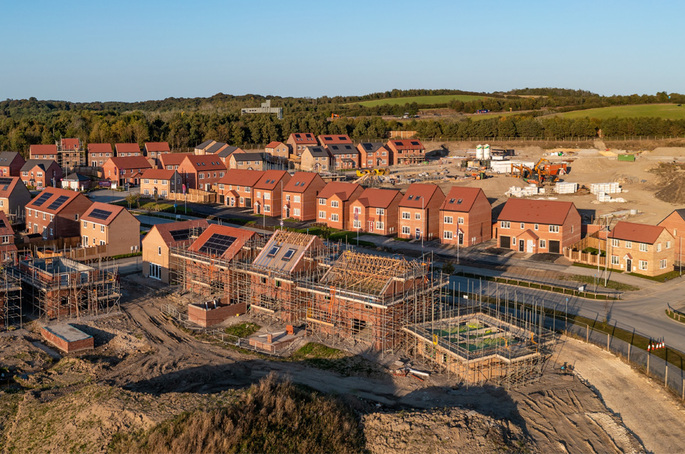A new report from the Public Accounts Committee (PAC) has identified ‘a number of problems' with Community Infrastructure Levies (CIL) and other developer contribution systems, which means cash has failed to reach local communities.
One of the issues highlighted by the inquiry undertaken by PAC was a lack of clarity regarding the number of unsold affordable houses.
Members of the PAC heard evidence from the Home Builders Federation that ‘at least 17,000 affordable housing units, provided through Section 106 (S106) agreements between developers and planning authorities, are sitting unsold'.
Despite this evidence, there are only roughly 800 houses listed as unsold on the Government's S106 Affordable Homes Clearing Service, which is designed to connect buyers and sellers to help developers who are struggling to sell their affordable homes.
The inquiry raised this 16,200-house disparity with the Government, but it was told that officials were ‘unclear as to why it existed'.
As well as this reporting error, the inquiry also pointed out a ‘lack of staffing capacity and capability of planners in local authorities, which it referred to as a ‘serious problem'.
It was also stated that the PAC was ‘unconvinced' that the Government is addressing this satisfactorily. According to the report, the issue is largely caused by the working environment, caseloads, pay and more attractive opportunities in the private sector.
According to the Local Government Association, the appeal of better prospects found in the private sector meant that over half of English local authorities struggled to recruit planning officers in 2022.
Due to this, larger developers end up having more specialist negotiators and better resources, causing an ‘asymmetry' that the PAC warns can lead to councils finding it hard to challenge viability assessments and claims of financial feasibility from developers.
This means that communities may therefore ‘fail to receive' the developer contributions that are owed to them. To rectify this issue, the report is calling for the Government to provide ‘new guidance for councils' that balances the need for ‘flexibility in negotiations' with methods of dissuading developers from ‘gaming the system'.
An additional systemic issue was found in the form of a decrease in councils that have a local plan in place. According to the PAC, planning authorities that do not have a plan run the risk of both being unable to meet local demand for new homes and failing to coordinate the appropriate amount of developer contributions.
In 2019, 149 English local planning authorities had up-to-date plans, but this saw a decrease of 29% to only 86 in February of this year.
In the process of conducting this inquiry, the PAC also found that only half of all local authorities were operating a CIL – which are intended to make getting contributions from developers fairer, faster, and more certain and transparent – in 2024. The recommendation to the government is for it to identify areas where these levies should be viable and encourage wider use of them, where appropriate'.
Sir Geoffrey Clifton-Brown MP, chair of the Public Accounts Committee, said: ‘This country is in the middle of an acute housing shortage, and families around the country have long been unable to access the homes they need as a result. To see any affordable home sitting empty in this context is a senseless, wasteful system failure. Even more frustratingly, the government's tally of how many unsold S106 homes there may be is miles wide of the sector's own figures. By the sector's accounting, a good proportion of the new affordable homes required in a year, 17,000 of them, may be waiting out there unsold – but the government could not explain the wide disparity between this figure and the 800 homes it has itself listed as available. This state of affairs must not be allowed to continue.
‘The government has understandably reached for planning system reform as a lever to unlock growth. Our report demonstrates the scale of some of the problems it has to unpick, in particular the drought of planners in local authorities. Without a functioning pipeline of highly skilled planning professionals, councils will continue to be outmanoeuvred in any negotiation with developers in affordable homes negotiations. Given the government's ambitions for huge increases in housing numbers, there are valid concerns that infrastructure construction will lag behind. It's even more important that the developer contribution system works properly to keep up with planned supply. If government is serious about making the developer contribution system work properly, it must show how it is going to address this problem, as well as the other systemic issues articulated in our report.'

























